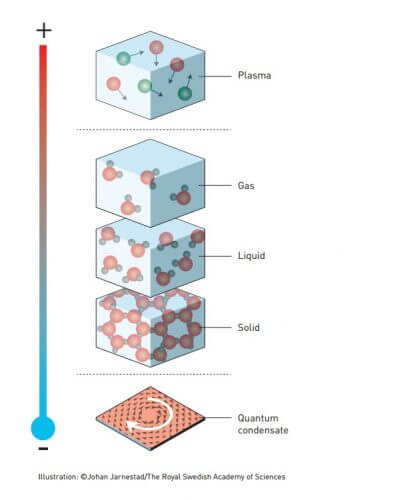They used advanced mathematical methods to investigate the unusual instances, or states, of matter, such as superconductors, superfluids or thin magnetic layers. Thanks to the discovery, efforts are being made to develop future applications both in materials science and in the fields of electronics following these discoveries.

The 2016 Nobel Prize in Physics was awarded to three American researchers for the discovery of topological phenomena
The Royal Swedish Academy of Sciences has decided to award the Nobel Prize in Physics for 2016, with half of it awarded to researcher David J. Thouless, from the University of Washington in Seattle, USA; and the second half to two researchers: F. Duncan M. Haldane from Princeton University, USA and researcher Michael Kosterlitz from Brown University. The prize is awarded for "the theoretical discoveries of transitions between topological instances and topological instances of matter".
Discovering the secrets of unusual materials
The winners of this year's Nobel Prize in Physics have opened the door to an unknown world where matter can be found in strange situations. They used advanced mathematical methods to investigate the unusual phenomena, or states, of matter, such as superconductors, superfluids or thin magnetic layers. Thanks to their pioneering work, the hunt for unusual and new states of matter begins now. Many researchers hope for the development of future applications both in materials science and in the fields of electronics following these discoveries.
The three laureates' use of topological concepts in physics was a crucial step in achieving their discoveries. Topology is a branch of mathematics that describes properties that change only gradually, step by step. The use of topology as a tool allowed Nobel laureates to amaze even the experts in their field. In the early XNUMXs, researchers Michael Kosterlitz and David Thewles disproved the theory that superconductivity or superfluidity cannot occur in thin layers. They showed that superconductivity can occur at low temperatures and also explained the mechanism (transition of events) that causes superconductivity to disappear at higher temperatures.
In the XNUMXs, Thewles was able to explain an earlier experiment in which extremely thin layers conducted electricity when the conductivity was measured precisely as discrete or whole phases. He showed that these steps were topological in nature. Around the same time, Duncan Haldin discovered how topological ideas could be used to understand the properties of chains of small magnets found in certain materials.
Today we know many topological instances, not only in thin layers and beads, but also in ordinary 2016D materials. During the last decade, this field of research has broken all the boundaries in the field of condensed matter physics, at least thanks to the hope that topological materials could be used in the development of a new generation of electronic components and superconductors, or in the future field of quantum computers. The current research in this field reveals the secrets treasured within extraordinary materials discovered by the three laureates of the XNUMX Nobel Prize in Physics.
